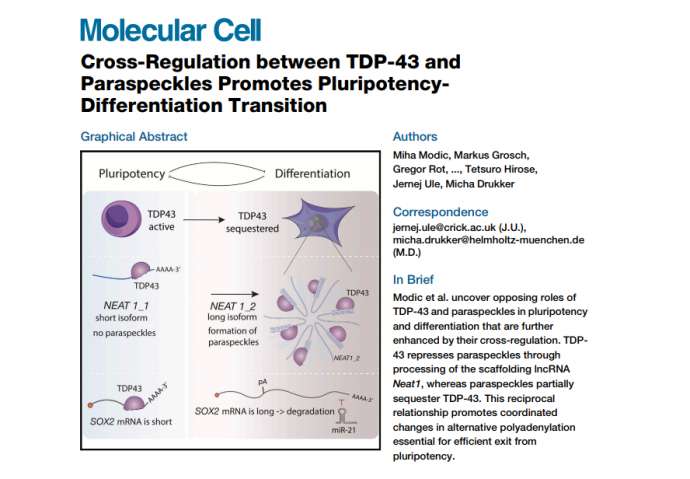STA, 6 May 2019 - A team that also featured five Slovenian researchers has published a ground-breaking cell differentiation paper that can potentially help revolutionise personalised regenerative medicine, Slovenia's Jožef Stefan Institute (IJS) has reported.
Contributing to the paper, published in the journal Molecular Cell, were London-based researchers Miha Modic and Jernej Ule, Gregor Rot of the University of Zurich, Tjaša Lepko from the Helmholtz Centre in Munich and Boris Roglej of IJS.
The researchers described the regulatory network explaining the starting events leading to an effective differentiation of stem cells and the development of an embryo. The findings are considered groundbreaking for the understanding of cell differentiation processes.
The researchers were examining the molecular mechanism of the differentiation of pluripotent cells, which differ from adult stem cells in that they are capable of differentiation into any cell of the human body.
Induced pluripotent cells can then reprogramme any cell of a person's body into induced stem cells. These can in turn be differentiated into all cell types, for instance also the patient's own beta cells that produce insulin, meaning they have the potential to revolutionise personalised regenerative medicine.
A complex series of studies allowed the researchers to discover in what way paraspeckles, irregularly shaped compartments of the cell that do not exist in the nuclei of pluripotent cells, are formed during the differentiation of stem cells and what role is played by RNA (Ribonucleic acid)-networks and RNA-binding proteins.
According to IJS, paraspeckles are the new "rising stars" in the field of cellular biology that can potentially help explain a number of conditions in the human body but are poorly researched.
Along with the utility for regenerative drugs, the understanding of these regulatory networks could also shed new light on various conditions, including cancer and neurodegenerative diseases.
The paper, titled Cross-Regulation between TDP-43 and Paraspeckles Promotes Pluripotency-Differentiation Transition, can be read here (PDF).






